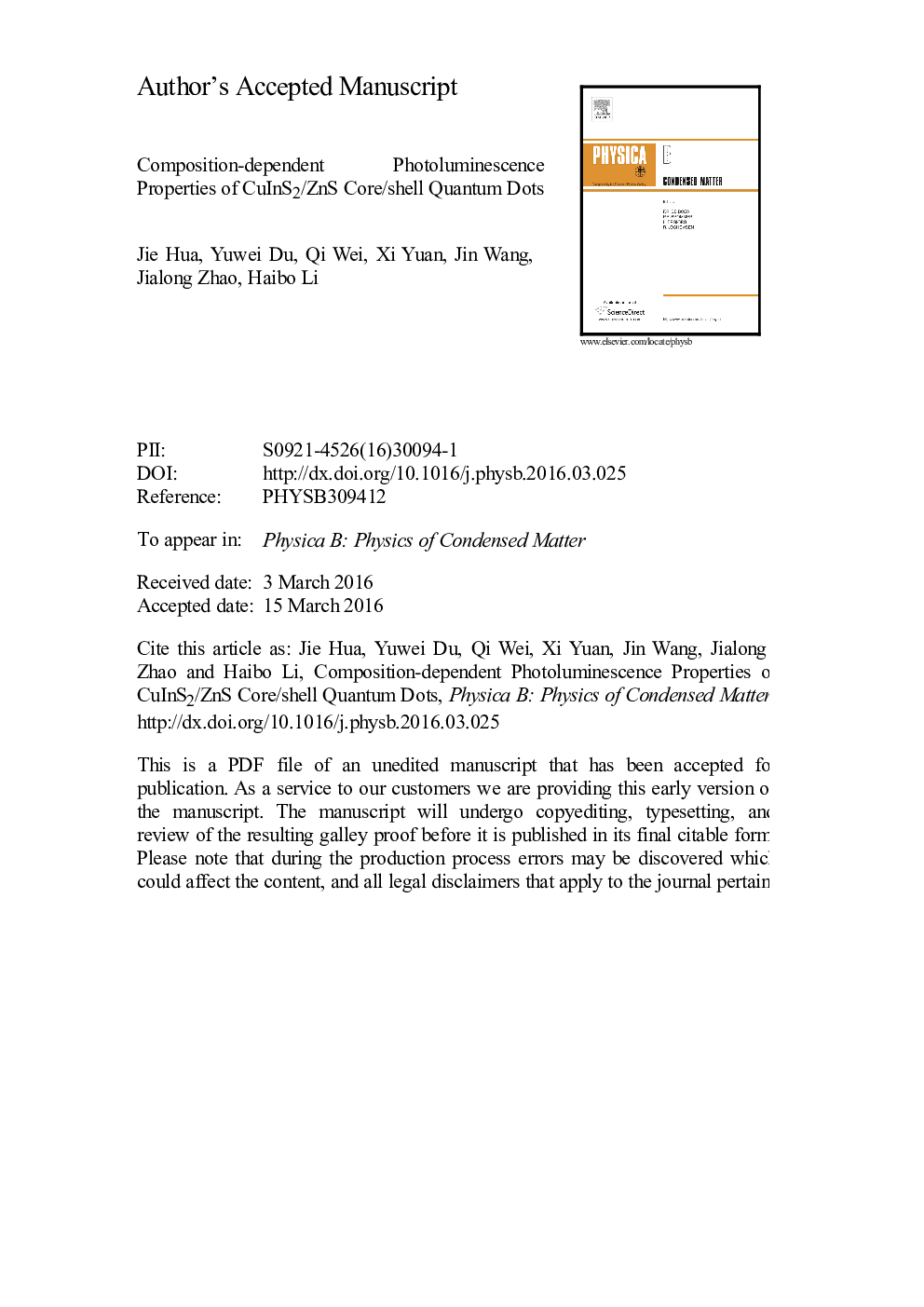| Article ID | Journal | Published Year | Pages | File Type |
|---|---|---|---|---|
| 8161811 | Physica B: Condensed Matter | 2016 | 16 Pages |
Abstract
CuInS2/ZnS (CIS/ZnS) core/shell quantum dots (QDs) with various Cu/In ratios were synthesized using the hot-injection method, and their photoluminescence (PL) properties were investigated by measuring steady-state and time-resolved PL spectroscopy. The emission peak of the CIS/ZnS QDs were tuned from 680 to 580Â nm by decreasing the Cu/In precursor ratio from 1/1 to 1/9. As the Cu/In ratio decreases, the PL lifetimes and PL quantum yields (QYs) of CIS/ZnS core/shell QDs increased firstly and then decreased. Two dominant radiative recombination processes were postulated to analyze composition-dependent PL properties, including the recombination from a quantized conduction band to deep defects state and donor-acceptor pair (DAP) recombination. The decrease of PL efficiency resulted from high density defects and traps, which formed at the interface between CIS core and ZnS shell due to the large off-stoichiometry composition. The PL intensity and peak energy for CIS/ZnS core/shell QDs as a function of temperature were also provided. The thermal quenching further confirmed that the PL emission of CIS/ZnS QDs did not come from the recombination of excitons but from the recombination of many kinds of intrinsic defects inside the QDs as emission centers.
Keywords
Related Topics
Physical Sciences and Engineering
Physics and Astronomy
Condensed Matter Physics
Authors
Jie Hua, Yuwei Du, Qi Wei, Xi Yuan, Jin Wang, Jialong Zhao, Haibo Li,
